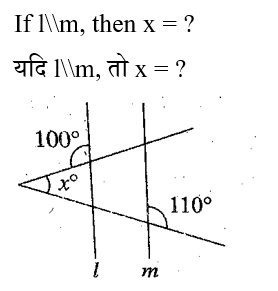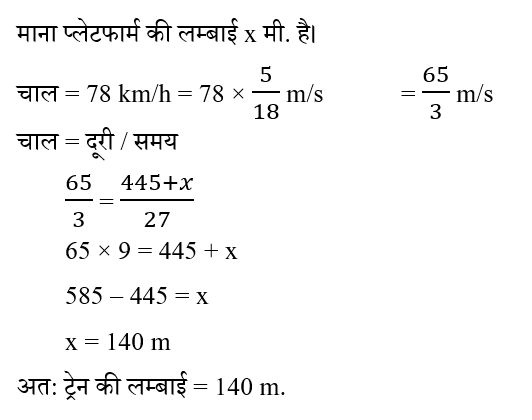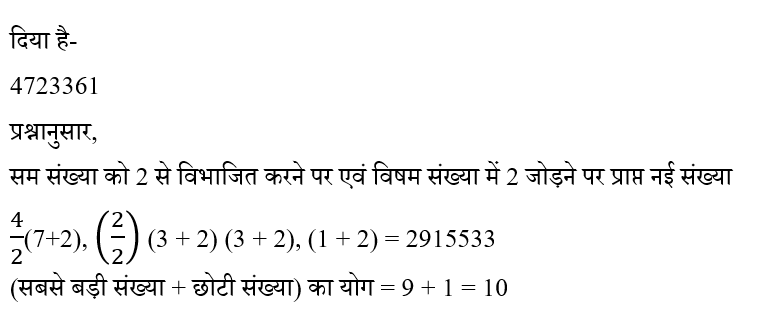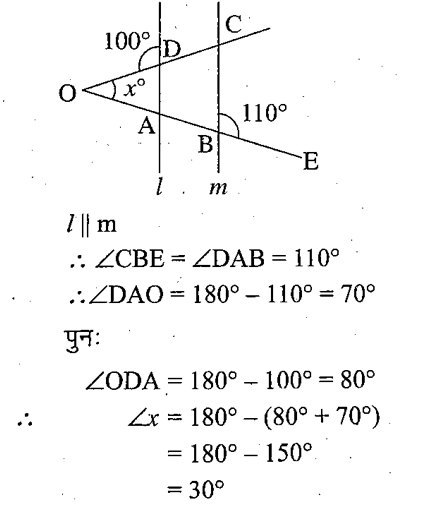Question 1:
If lengths of two sides of a triagle are 5 cm and 9 cm, then the length of the third side of the triangle:
यदि किसी त्रिभुज की दो भुजाओं की लंबाइयाँ 5 cm और 9 cm हैं, तो इस त्रिभुज की तीसरी भुजा की लंबाई:
Question 2: 
Question 3:
After six years, Sunil will be twice as old as Kamal. Two years ago, his age was four times that of Kamal. Find Kamal's present age.
छह वर्ष बाद, सुनील की आयु कमल से दोगुनी हो जाएगी। दो वर्ष पहले, उसकी आयु कमल से चार गुनी थी । कमल की वर्तमान आयु ज्ञात कीजिए।
Question 4:
Three coins are tossed simultaneously. What is the probability of getting at least two heads?
तीन सिक्कों को एक साथ उछाला जाता है। कम से कम दो चित्त (heads) पाने की संभाव्यता कितनी है ?
Question 5:
A train travelling at 78 km/hr crosses a platform 445 m long in 27 seconds. What is the length of the train?
78 किमी / घण्टे से चलने वाली ट्रेन 27 सेकंड में 445 मीटर लंबे प्लेटफॉर्म को पार करती है। ट्रेन की लंबाई कितनी है?
Question 6:
A, B and C are the centres of three circles. The circles touch each other externally and their radii are 3 cm, 4 cm and 5 cm respectively. Find the perimeter of ∆ABC.
A, B और C तीन वृत्तों के केन्द्र हैं। वे वृत्त बाह्यतः एक-दूसरे को स्पर्श करते हैं और उनकी त्रिज्याएँ क्रमशः 3 सेमी, 4 सेमी और 5 सेमी हैं। ∆ABC की परिमिति ज्ञात कीजिए ।
Question 7:
If each even digit in the number 4723361 is divided by 2, and 2 is added to each odd digit, then what will be the sum of the largest and the smallest digits of the new number thus formed?
यदि संख्या 4723361 में प्रत्येक सम अंक को 2 से विभाजित किया जाए, और प्रत्येक विषम में 2 जोड़ा जाए, तो इस प्रकार बनी नई संख्या के सबसे बड़े और सबसे छोटे अंकों का योग कितना होगा?
Question 8: 
Question 9:
Two pencils, three books and four erasers cost ₹ 15. Three pencils, two books and one eraser cost ₹ 10. How much did I pay when I bought 3 pencils, 3 books and 3 erasers?
दो पेंसिल तीन किताबें और चार रबड़ की कीमत ₹15 है। तीन पेंसिल दो किताबें और एक रबड़ की कीमत ₹10 है। मैंने 3 पेंसिल, 3 किताबें और 3 रबड़ खरीदी तब मैंने कितना भुगतान किया?
Question 10: 








